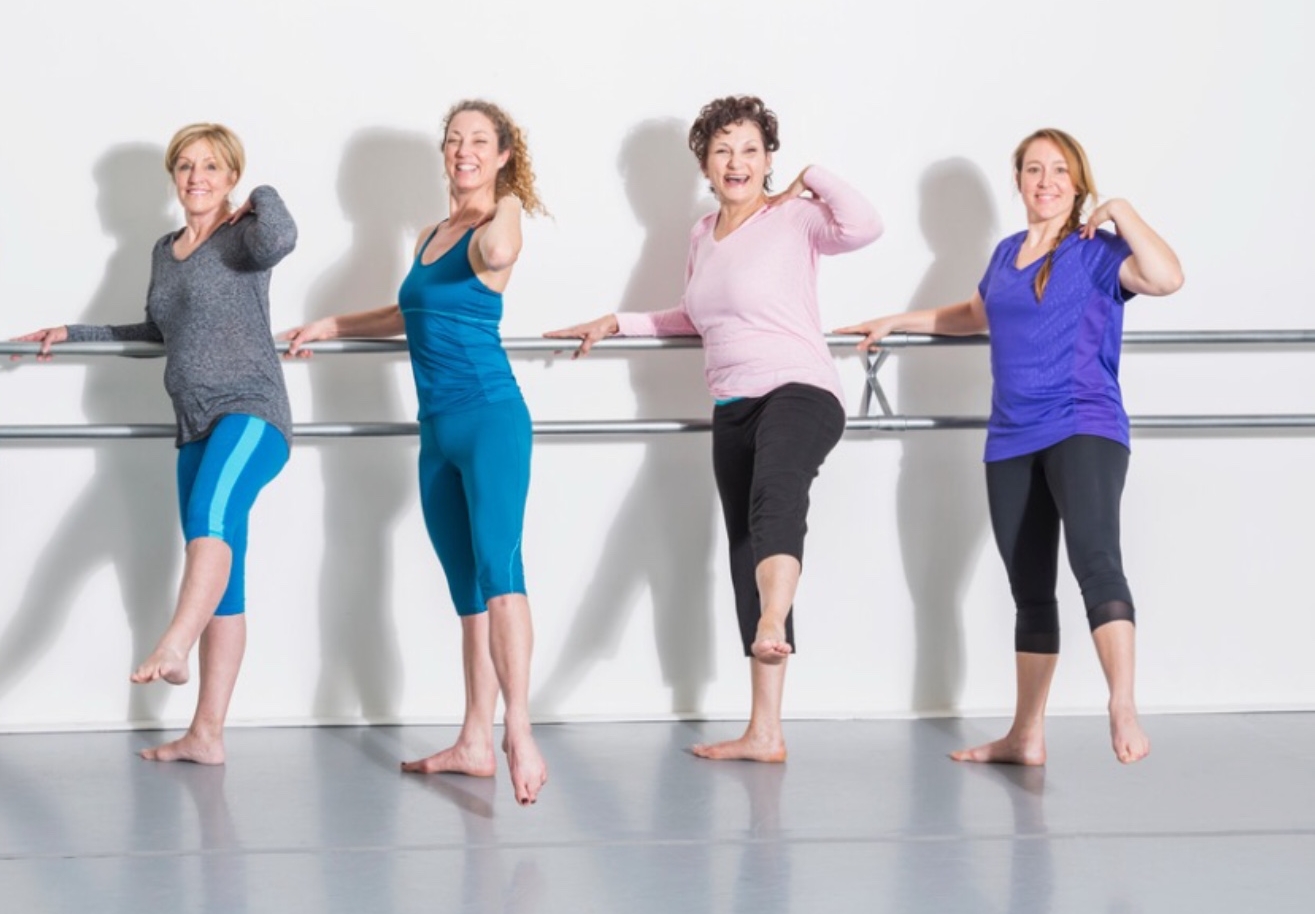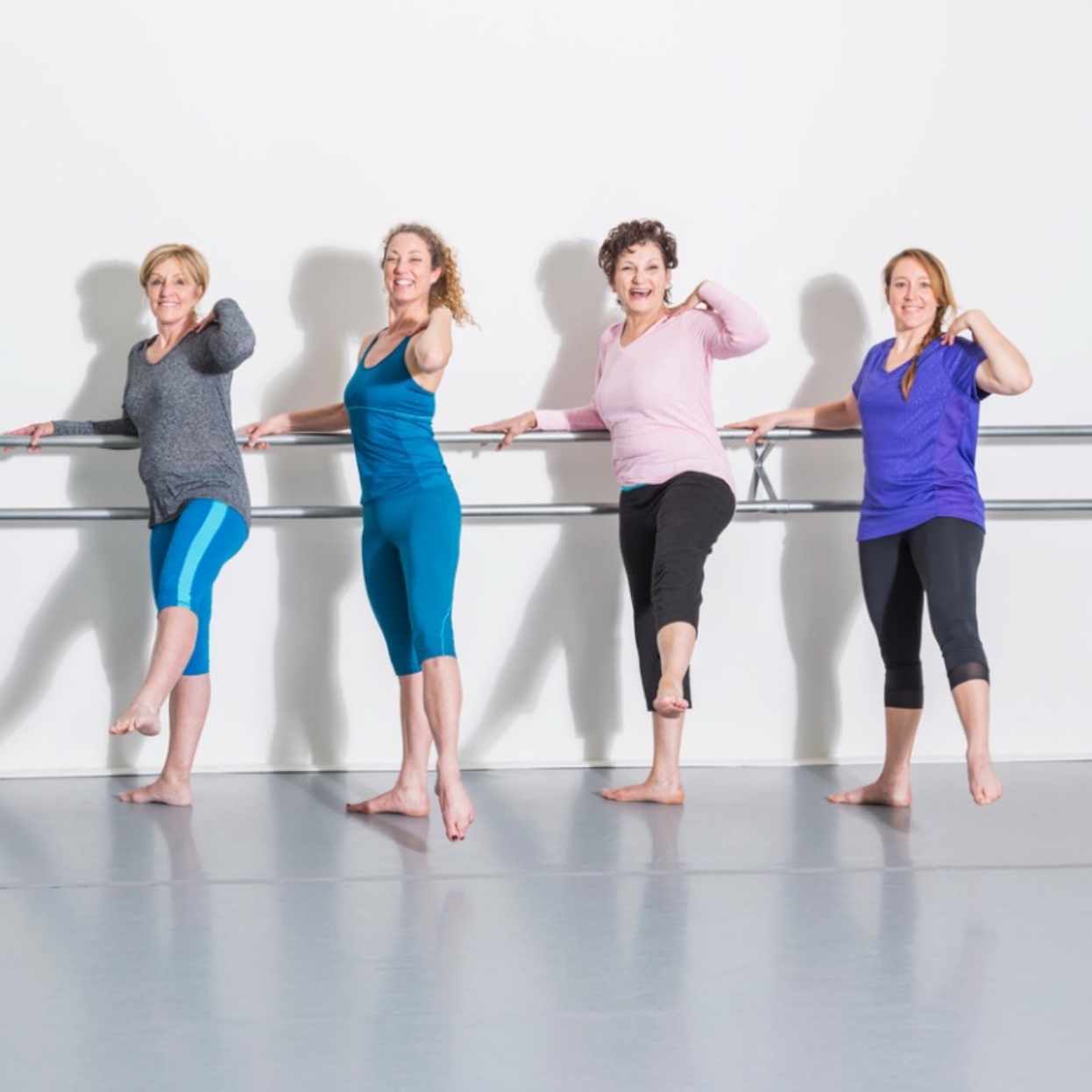
When it comes to exercise that is low impact but high in intensity, barre workouts are a popular choice. Maybe you’ve tried a class or maybe you haven’t because you weren’t sure if it was right for you.
Barre exercise combines many aspects of yoga, Pilates, ballet moves, and strength training. But, barre class isn’t just for ballerinas. So, who is it for and how do you know if it’s right for you?
The Benefits of Barre
The foundation of barre exercise is that tiny movements result in isometric contraction – meaning muscle strengthening without lengthening or shortening. For example, in a hamstring curl your muscle shortens as you bend your knee and lengthens as you straighten your knee.
In barre, you would come into a squat position with the knee partially bent and do small pulse movements until the muscle fatigues. Your muscles aren’t actually moving very much despite being activate. It may surprise you how quickly the muscle fatigues in this position. This can be a good way to strengthen a muscle around a joint that has been injured because you the joint itself is moving very little.
When it comes to injury recovery and prevention, the stretching component of Barre workouts is beneficial. The usual protocol is to work a muscle group to fatigue and then stretch it out. The stretching component allows the muscle to rebuild in a lengthened position instead of tightened. Proponents believe this is what gives ballerinas the long and lean look as opposed to a bulky, muscular look (but there are of course a lot of other factors too).
One of my favorite components of Barre is the mind-body connection that is encouraged. The smaller movement and high repetitions enhance your level of body awareness – something often ignored in other strength training programs. By being mindful of your movements, you can improve muscle activation, posture, and balance.
Despite all these benefits, there are limitation to this type of workout and people who this isn’t best for.
The Limitations of Barre
Let’s start with the functionality of the movements. How well does pulsing in mid squat help you improve your strength to carry a heavy box or hike up a mountain?
If you have functional goals – things in everyday life that you want to do better or with more ease – you need to strengthen your body with compound movements. Barre classes usually isolate single muscles and joints, which is not how our body works in real life.
Another area lacking in Barre class is the cardiovascular challenge. People often go through an entire class without increasing their heart rate or breathing. This also limits the number of calories burned during a work and the “post burn” effect.
It’s also easy with a low impact workout to just “go through the motions”. You will not get the health or weight loss benefits of any exercise if you aren’t pushing yourself. Bodies must be challenged in order to experience change. (See previous blog post on making the most of your low impact exercise for more on this)
Don’t Try a Barre Workout Yet If . . .
One other nuisance to barre is the emphasis on pelvic tucks. In various positions, exercisers are asked to pull in their stomach and tuck their backside underneath of them. This can be a great movement for some people, but if you have experienced low back pain, hip or pelvic pain it can be problematic – this includes women postpartum or after an abdominal surgery.
If you fall into one of these categories, that doesn’t mean you can’t ever do a barre workout. It is just important that you have our your low back, pelvic, and abdominal weakness and misalignment addressed by an expert before starting. There are also modifications you can make to the workouts to prevent problems if you want to continue working out while you rehab.
Back problems, hip or pelvic pain, recent pregnancy? Talk with a Doctor of Physical Therapy before progressing with your exercise routine. It’s easy, its free, and you can get your questions answered from home . . . click HERE to request a Free Phone Consultation.




